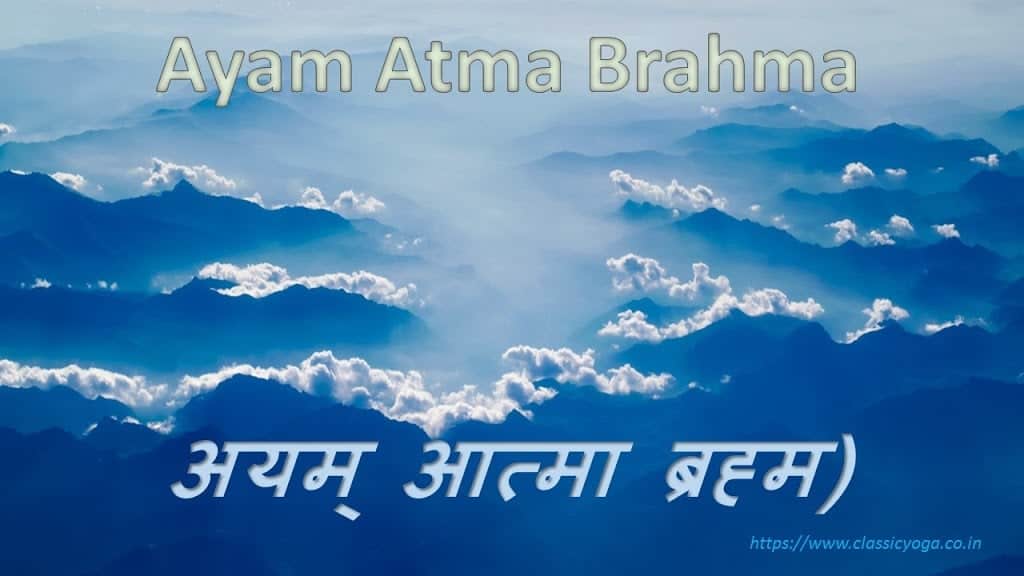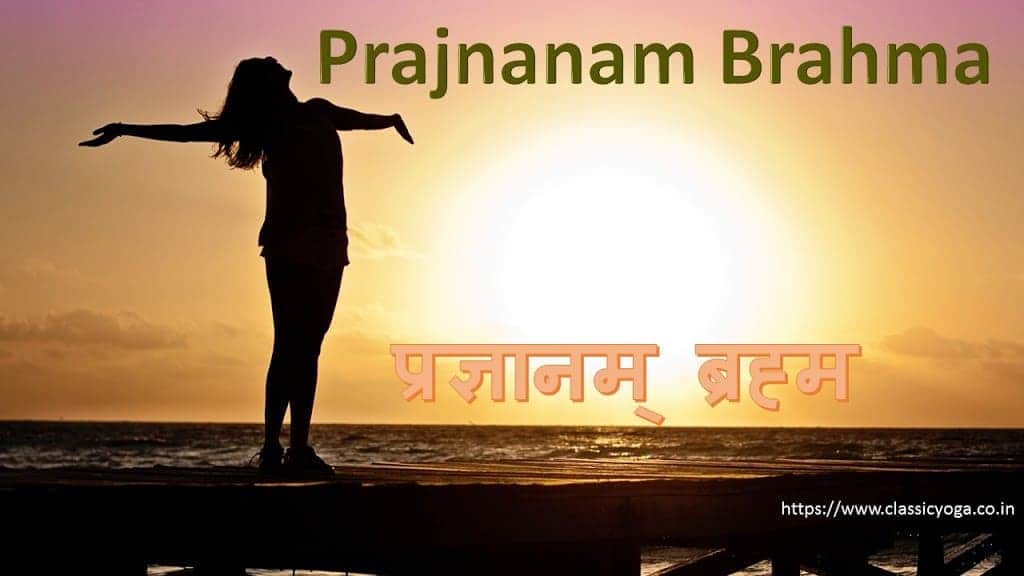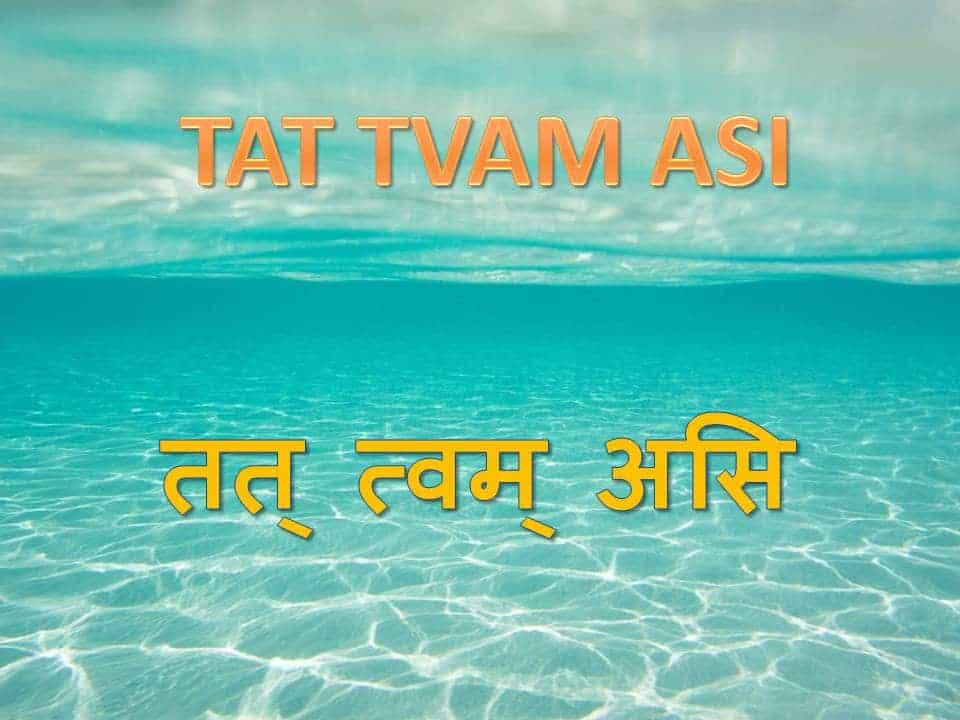Introduction
Ayam Atma Brahma is the Mahavakya that is found in Mandukya Upanishad of Atharva Veda. As other Mahavakyas, it also explains the Jiva-Brahmaikya or the oneness of Brahman and Atman which is the basic tenet of Advaita Philosophy. According to the Guru Gita, Ayam Atma Brahma is Abhyasa Vakya or the statement of Practice.
The important Mahavakyas are Aham Brahmasmi, Tat Tvam Asi, and Prajnanam Brahma.Ayam Atma Brahma Meaning
The Sanskrit term Ayam means ‘this’. ‘Atma refers to ‘Atman’ or Self’. Brahma is Brahman, the Supreme Entity. Hence Ayam Atma Brahma means ‘Atman is Brahman’. What is Atman? Tattva Bodha defines Atman as ‘that which is other than the gross body, subtle body, and causal body, which is beyond the five sheaths of the body (Annamaya Kosha, Pranamaya Kosha, Manomaya Kosha, Vijnanamaya Kosha, and Anandamaya Kosha), which is the witness of three states of Consciousness (Jagrat, Svapna, and Susupti) and which is of the nature of Existence-Consciousness-Bliss’. This Atman is Brahman. What is Brahman? Brahman is the Supreme Entity which alone is real.
Aym Atma Brahma in Ribhu Gita
To understand the meaning of this Mahavakya, The Advaita Text Ribhu Gita comes to our help.
Chapter twenty-eight of Ribhu Gita explains the Mahavakya in detail. According to Ribhu Gita, the meaning of Mahavakya is ‘this Atman is Brahman. ‘This’ means the individual or Jiva conditioned by Avidya or ignorance. Atman means Isvara or God conditioned by Maya or delusion. The indicated meaning of the two words is ‘the Jiva and Isvara without any conditioning. The identity of indicated meaning or indirect meaning of the two words is the meaning of the word ‘Brahman’. The meaning of this Mahavakya can be understood by negating all the conditioning of the Jiva and Isvara to have the indicated meaning of non-duality. By contemplating the meaning that I am the nature of non-dual absolute as indicated the real nature can be enjoyed which has been forgotten. This self is Brahman is the statement of perception and confirms all other Mahavakyas.
Mandukya Upanishad
Mandukhya Upanishad contains only twelve verses which have a profound meaning to explain the whole philosophy of Advaita Vedanta. The Mahavakya appears in the second verse.
Om̃ ityetadakṣaramidam sarvaṃ tasyopavyākhyānaṃ bhūtaṃ bhavad bhaviṣyaditi sarvamoṅkāra eva yaccānyat trikālātītaṃ tadapyoṅkāra eva ॥1॥
Om, the word that is all. All that is past, present, and future is Om only. That which is beyond the trinity of time is verily Om.
sarvaṃ hyetad brahmāyamātmā brahma so’yamātmā catuṣpāt ॥2॥
All this is Brahman. This Atman is Brahman. This Atman has four states.
The First State: Waking State
jāgaritasthāno bahiṣprajñaḥ saptāṅga ekonaviṃśatimukhaḥ sthūlabhugvaiśvānaraḥ prathamaḥ pādaḥ ॥3॥
The first is Visvanara which is active in the waking state (Jagrat). It has seven limbs and nineteen mouths (nineteen Tattvas). In this state, the subject experiences gross objects.
The Second State: Dream State
svapnasthāno’ntaḥprajñaḥ saptāṅga ekonaviṃśatimukhaḥ praviviktabhuktaijaso dvitīyaḥ pādaḥ ॥4॥
The second state is Taijasa which is active in the dream (Svapna). It has seven limbs and nineteen mouths. In this state, the subject experiences subtle objects.
The Third State: Deep Sleep State
yatra supto na kañcana kāmaṃ kāmayate na kañcana svapnaṃ paśyati tat suṣuptam । suṣuptasthāna ekībhūtaḥ prajñānaghana evānandamayo hyānandabhuk cetomukhaḥ prājñastṛtīyaḥ pādaḥ ॥5॥
Deep sleep is the stage wherein the sleeper neither has any desire for objects nor sees any dream. The Atman in the third stage is known as Prajna in whom deep sleep is active (Susupti), in whom all his experiences become unified and undifferentiated, who is verily the mass of whole consciousness, Who experiences the Bliss and who is the path leading to the knowledge.
The Fourth State: Transcending State
eṣa sarveśvaraḥ eṣa sarvajña eṣo’ntaryāmyeṣa yoniḥ sarvasya prabhavāpyayau hi bhūtānām ॥6॥
This is the Supreme God. This is omniscient. This transcends through. This is the organ of the generation where everything originates and in which everything disappears.
nāntaḥprajñaṃ na bahiṣprajñaṃ nobhayataḥprajñaṃ na prajñānaghanaṃ na prajñaṃ nāprajñam । adṛṣṭamavyavahāryamagrāhyamalakṣaṇaṃ acintyamavyapadeśyamekātmapratyayasāraṃ prapañcopaśamaṃ śāntaṃ śivamadvaitaṃ caturthaṃ manyante sa ātmā sa vijñeyaḥ ॥7॥
It is not an internal consciousness. Also, It is not an external consciousness. It is not both of them together. Also, It is not a mass of sentience. It is not a simple consciousness. Similarly, It is not insentient. Neither, it is perceptible nor it can be related to anything. It is incomprehensible. It is irrational. Also, It is unthinkable and indescribable. It is consciousness constituting Atman alone. Nothing other than that. It is peaceful, Blissful, and non-dual (nothing other than the whole). This is the fourth one (Turya). This Atman is to be known.
OM or AUM
so’yamātmādhyakṣaramoṅkaro’dhimātraṃ pādā mātrā mātrāśca pādā akāra ukāro makāra iti ॥ 8॥
That Atman (which has four parts explained above) is Om from the point of view of the letters. Om has (four) parts from the point of view of the sounds. The letters (of the Om) are parts (of Atman) and parts are the letters. The letters are A, U, and M.
jāgaritasthāno vaiśvānaro’kāraḥ prathamā mātrā”pterādimattvād vā”pnoti ha vai sarvān kāmānādiśca bhavati ya evaṃ veda ॥9॥
Vaisvanara who is active in the waking state is the first letter of Om (A), because of its all-pervasiveness and on account of being the first. One who knows this gets his desires fulfilled and becomes the first.
svapnasthānastaijasa ukāro dvitīyā mātrotkarṣāt ubhayatvādvotkarṣati ha vai jñānasantatiṃ samānaśca bhavati nāsyābrahmavitkule bhavati ya evaṃ veda ॥10॥
Taijasa who is active in the dreaming state is the second letter of Om (U) on account of its superiority that lies in between the two. He who knows this attains the superior knowledge and he is treated by all as so. He finds no one in his vicinity who does not know Brahman.
suṣuptasthānaḥ prājño makārastṛtīyā mātrā miterapītervā minoti ha vā idaṃ sarvamapītiśca bhavati ya evaṃ veda ॥11॥
Prajna who is active in the deep sleep state is the third letter of Om (M) on account of its measure and that wherein all become one. One who knows this can measure all and comprehend all in himself.
amātraścaturtho’vyavahāryaḥ prapañcopaśamaḥ śivo’dvaita evamoṅkāra ātmaiva saṃviśatyātmanā”tmānaṃ ya evaṃ veda ॥12॥
The fourth one has no sound, which is imperceptible, wherein everything ceases, and which is bliss and non-dual. It is Omkara Atman. He is that Atman. he who knows this merges his Atman in that Atman.
Conclusion
All Mahavakyas explain directly or indicate indirectly the non-duality of the Atman and Brahman.
Recommended Reading
- Lecture on Atman by Swami Sarvapriyananda (Video)
- Mandukhya Upanishad with Gaudapada Karika and Sankara Bhashya-Swami Nikhilananda
- Mandukhya Upanishad – Sanskrit Text



